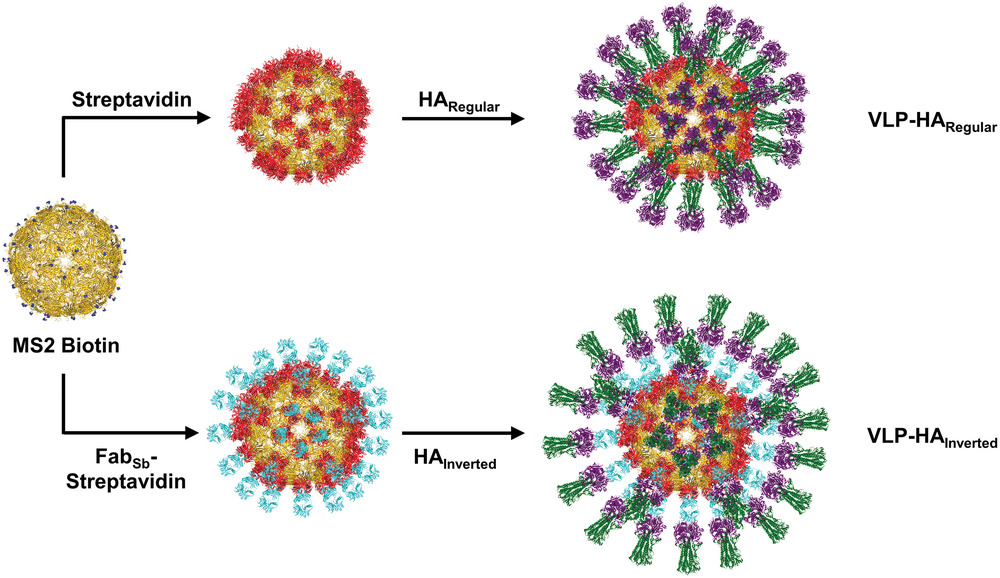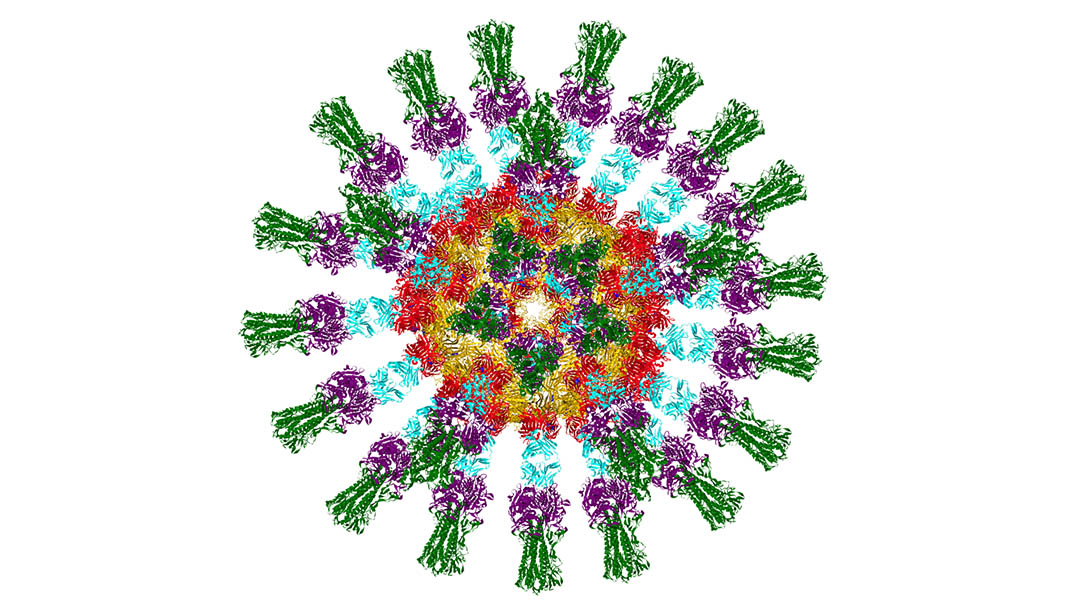Cooler temperatures, shorter days, and seasonal flu vaccines are all regular parts of autumn. Flu shots are required every year because the many strains of influenza viruses that infect humans also mutate quite rapidly, meaning a highly effective flu vaccine one year won’t necessarily work nearly as well the next.
To overcome this problem and create a flu vaccine that doesn’t require annual tweaking, a group of researchers is literally flipping influenza on its head.
Ever-changing flu strains
In flu vaccines, the antigen used to stimulate an immune response is typically the hemagglutinin (HA) protein — a viral protein that is responsible for the influenza virus’ ability to bind to and enter human cells. It sits on stalks that protrude from the outer surface of the virus and has a high mutation rate.
For influenza type A viruses — the most common source of human epidemics — there are 18 HA subtypes which can mutate and recombine with related influenza A strains, requiring an updated vaccine each year. Interestingly, the stalk on which the HA head sits is highly conserved, meaning it is almost identical across all influenza A viruses and doesn’t mutate much at all.
This makes the stalk an excellent candidate for use as a vaccine antigen as it could provoke an immune response against any inluenza A strain and it wouldn’t change year after year.
According to Ravi Kane, professor at the School of Chemical and Biomolecular Engineering at Georgia Tech in Atlanta, the influenza stalk is an intriguing possibility for use as a vaccine antigen because we already know that it elicits an immune response in the form of anti-stalk antibodies. The problem is that these antibodies are produced in significantly lower quantities than antibodies aimed at HA.
Kane and colleagues hypothesized that this had to do with its physical location on the virus particle. “In flu viruses, the head needs to be out,” Kane explained. HA must be exposed so it can attach to human cells. The stalk is therefore not readily accessible to the immune system’s B-cells, which identify antigens and produce antibodies.
Flipping influenza on its head
To circumvent this problem, Kane and collaborators at the Icahn School of Medicine at Mount Sinai in New York proposed a simple yet elegant solution: reorient the HA protein used in the vaccine so the stalk is exposed.
“If you just flip the HA, maybe the stalk now becomes much more accessible and the response is targeted more towards the stock than the head,” said Kane. To make this happen, the team needed to find a way to “glue” the protein to a nanoparticle in the correct orientation and then test whether this would induce an immune response to the stalk and protect individuals from getting the flu.
In a new paper published in Advanced Healthcare Materials, the team described a new influenza vaccine with an inverted HA protein. The vaccine uses a virus-like nanoparticle that is made from the outer coat proteins of a virus that infects only bacteria. This nanoparticle can bind other proteins and is harmless to humans.

To attach the HA protein, the nanoparticle was coated with a protein that efficiently binds two other proteins: biotin and FAB. Bioctin is easily added to the tail of the HA head, allowing it to be attached in the proper orientation to the nanoparticle. FAB binds directly to the top of the HA head, creating a molecular, two-sided tape that pastes the HA protein to the particle in an inverted, head down orientation.
The team created two vaccines this way: one with HA in regular orientation that acted as a control and another with an inverted HA orientation that exposed the stalk.
A new vaccine design
In trials with mice, those receiving the stalk-out vaccine produced ten times as many anti-stalk antibodies as the mice receiving the typical head-out vaccine. Next, the scientists wanted to see if the vaccine could protect against infection.
To be sure that protection was due to the anti-stalk antibodies and not any residual HA antibodies that were also inevitably produced at the same time, they exposed vaccinated mice to a flu with a manipulated HA protein. This hybrid flu had an HA head that wasn’t part of the vaccine but a stalk that was. Therefore, the mice’s immune systems had never seen this HA head before and any antibodies produced by vaccination would only protect against the stalk.
“At the highest dose tested, we see complete protection with the inverted orientation vaccine, but not with the regular orientation,” said Kane.
With these promising results, the team will now test how broad the protection is against a variety of influenza strains. This work also confirms the overall theory that antigens that aren’t physically accessible to the immune systems can be used as a vaccine target.
According to Kane, this approach can work for other viruses which have conserved regions tucked away from the immune system. For example, corona viruses have conserved regions next to the spike protein currently used in vaccines. A nanoparticle vaccine containing these proteins may be effective against new variants that arise.
Reference: Steven J. Frey, et al. Nanovaccines Displaying the Influenza Virus Hemagglutinin in an Inverted Orientation Elicit an Enhanced Stalk-Directed Antibody Response, Advanced Healthcare Materials (2023). DOI: 10.1002/adhm.202202729














